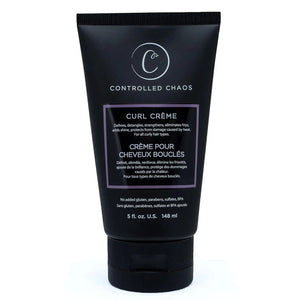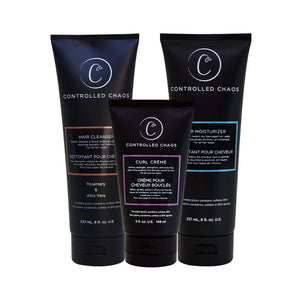

Understanding your hair’s curl pattern is critical to unlocking the secrets of optimal hair care and styling. Whether you have wavy, curly, or coily hair, knowing where you fall on the hair curl scale can help you choose the right products and styles for your unique texture. This guide will tell you how to identify your curl type and tips for mastering your curl pattern.
Hair Curl Scale:

Here’s a breakdown:
- 1A: Fine, very straight
- 1B: Medium texture, straight
- 1C: Coarse, straight
- 2A: Fine, barely there wave
- 2B: Medium texture, more defined S-shape waves
- 2C: Coarse, deep waves, slightly frizzy
- 3A: Loose curls, large and springy
- 3B: Medium curls, tighter ringlets
- 3C: Tight curls, corkscrew shape
- 4A: Soft, defined coils, S-shape pattern
- 4B: Z-shape pattern, less defined
- 4C: Tightest coils, minimal definition, prone to shrinkage
How to Identify Your Curl Type?
Identifying your curl type involves examining your hair’s natural state, free of heavy products or manipulation. Follow these steps:
- Wash and Condition: Cleanse your hair with a gentle shampoo and conditioner to remove buildup.
- Air Dry: Let your hair air dry completely without using a towel to avoid disturbing your natural pattern.
- Observe: Look at your hair in natural light. Notice the shape, size, and texture of your curls or waves.
Mastering Your Curl Pattern
Once you’ve identified your natural hair curl scale, mastering your curl pattern involves using the right products and care routines tailored to your needs. Here are some tips for each hair type:
Type 2 (Wavy Hair)
- Hydration: Wavy hair benefits from lightweight hydration. Use water-based leave-in conditioners and light oils like argan oil.
- Styling: Enhance waves with mousse or sea salt sprays. Scrunch your hair to encourage waves without weighing them down.
- Frizz Control: Combat frizz with anti-humidity serums and avoid brushing your hair when dry.
Type 3 (Curly Hair)
- Moisture: Curly hair needs ample humidity. Use rich conditioners and leave-ins to keep curls hydrated and defined.
- Styling: Apply curl creams or gels to damp hair, scrunch, and let air dry, or use a diffuser.
- Definition: For more defined curls, consider finger coiling or using a brush to shape curls.
Type 4 (Coily/Kinky Hair)
- Deep Conditioning: Regular deep conditioning treatments are essential for maintaining moisture and elasticity.
- Protective Styling: Styles like braids, twists, and bantu knots can help protect your hair and retain length.
- Gentle Detangling: When hair is wet and coated with conditioner, use wide-tooth combs or your fingers to detangle it.
General Tips for All Curl Types
- Sulfate-Free Shampoos: Avoid sulfates, which can strip natural oils from your hair.
- Regular Trims: Regular trims help prevent split ends and keep your curls looking healthy.
- Satin or Silk: To reduce friction and prevent breakage, sleep on a silk pillowcase or wear a satin bonnet.
Customizing Your Hair Care Routine
Here’s a detailed guide to help you build a routine for the Hair wave and curl levels.
Cleansing
- Frequency: Curly and coily hair typically doesn't need to be washed as often as straight hair. Aim for once-a-week or bi-weekly washes to retain natural oils.
- Co-Washing: If your hair is particularly dry, consider co-washing (washing with conditioner instead of shampoo). This helps cleanse the scalp without stripping away moisture.
Conditioning
- Leave-in conditioners provide ongoing moisture and protection throughout the day. Choose a product that complements your hair’s density and porosity.
Styling and Maintenance
- Heat Styling: Minimize heat-styling tools like blow dryers and flat irons. When you do use them, always apply a
Advanced Techniques for Curl Care
Mastering your curl pattern goes beyond basic hair care routines. Advanced techniques and specialized treatments can elevate your curl care game, ensuring your curls are consistently at their best.
Type 2 (Wavy Hair) Advanced Techniques
- Plopping: Apply your preferred styling product after washing, then wrap your hair in a T-shirt or microfiber towel. This technique helps define waves and reduce frizz.
- Root Clipping: To add volume at the roots, use small clips to lift sections of your hair at the roots while it dries. This technique prevents flatness and enhances wave definition. It also helps to know Hair wave and curl levels.
Type 3 (Curly Hair) Advanced Techniques
- Curly Girl Method: This popular method avoids sulfates, silicones, and heat. Instead, focus on hydrating and defining products and techniques that enhance natural curls.
- Pineapple: Before bed, gather your hair in a high, loose ponytail on top of your head. This method preserves curls overnight and reduces morning frizz.
- Drying Techniques: This helps maintain curl shape and reduces frizz. Air drying or using a hooded dryer are also excellent options.
Type 4 (Coily/Kinky Hair) Advanced Techniques
- L.O.C. Method: This layering method involves applying a Liquid (water or leave-in conditioner), Oil (like coconut or jojoba oil), and Cream (like shea butter) to lock in moisture.
- Banding: Stretch your coils by sectioning your hair and wrapping bands around each section from root to tip. This technique reduces shrinkage and enhances length.
- Finger Coiling: This technique can be time-consuming but yields highly defined curls.
Seasonal Hair Care Tips
Different seasons can affect how your curls behave. Here’s how to adapt your routine throughout the year:
Winter
- Hydration: Indoor heating can dry out your hair. Increase the use of deep conditioners and leave-in treatments.
- Protection: Wear hats lined with satin or silk to protect your hair from cold, dry air.
Summer
- UV Protection: Use hair products with UV filters to protect your hair from sun damage.
- Hydration: Increase hydration with lightweight leave-ins and regular conditioning to combat dryness from sun exposure and swimming.
Common Curl Challenges and Solutions
Understanding common challenges and their solutions can help you better manage your curls.
Frizz
- Solution: Use anti-frizz serums and avoid touching your hair when drying. Sleeping on satin or silk can also help.
Shrinkage
- Solution: Embrace shrinkage as a part of your curl pattern. For less shrinkage, use stretching techniques like banding or twist-outs.
Lack of Definition
- Solution: Apply styling products to soaking wet hair and use finger coiling or shingling techniques to enhance curl definition.
Final Thoughts
Mastering your hair wave and curl levels involves understanding your hair type and using appropriate products and techniques. Whether you’re just beginning to flaunt your natural curls or looking to refine your existing routine, this comprehensive approach will help you achieve healthy, beautiful curls. Remember, your hair is a unique part of you—love it, care for it, and let it shine in all.
FAQs:
What is the curly hair scale?
The curly hair scale, also known as the hair typing system, categorizes hair into four main types (straight, wavy, curly, and coily/kinky). Within each type, there are subcategories describing the specific curl pattern, size, and texture. This helps individuals understand their hair type for better care and styling.
Are my curls 2B or 2C?
2B curls are medium-textured with more defined S-shaped waves and a slight frizz, while 2C curls are coarser, with deep waves that form a more pronounced S-shape and are prone to frizz. Observing your hair's texture and wave definition can help you determine whether you have 2B or 2C curls.
Do I have 2C or 3A curls?
2C curls have deep, S-shaped waves that are coarser and more prone to frizz, while 3A curls are looser, well-defined, and springy ringlets. If your hair forms distinct curls rather than waves and has more bounce, you likely have 3A curls.
What is a number 3 curly hair?
Number 3 curly hair refers to the "Curly" category in the hair typing system, characterized by well-defined curls that range from loose, large curls (3A) to tight ringlets (3C). These curls are typically springy and can vary in texture and density.
How are curls graded on the hair curl scale?
Curls are graded on the curl scale from Type 1 (straight) to Type 4 (coily/kinky), with subcategories (A, B, C) within each type describing the curl pattern's size, definition, and texture. This system helps identify specific hair types for appropriate care and styling.
Can someone have multiple curl patterns on the hair curl scale?
Yes, it is common for individuals to have multiple curl patterns on the curl scale. Hair can vary in texture and curl type in different sections, requiring a personalized approach to hair care and styling to address the unique needs of each pattern.



















